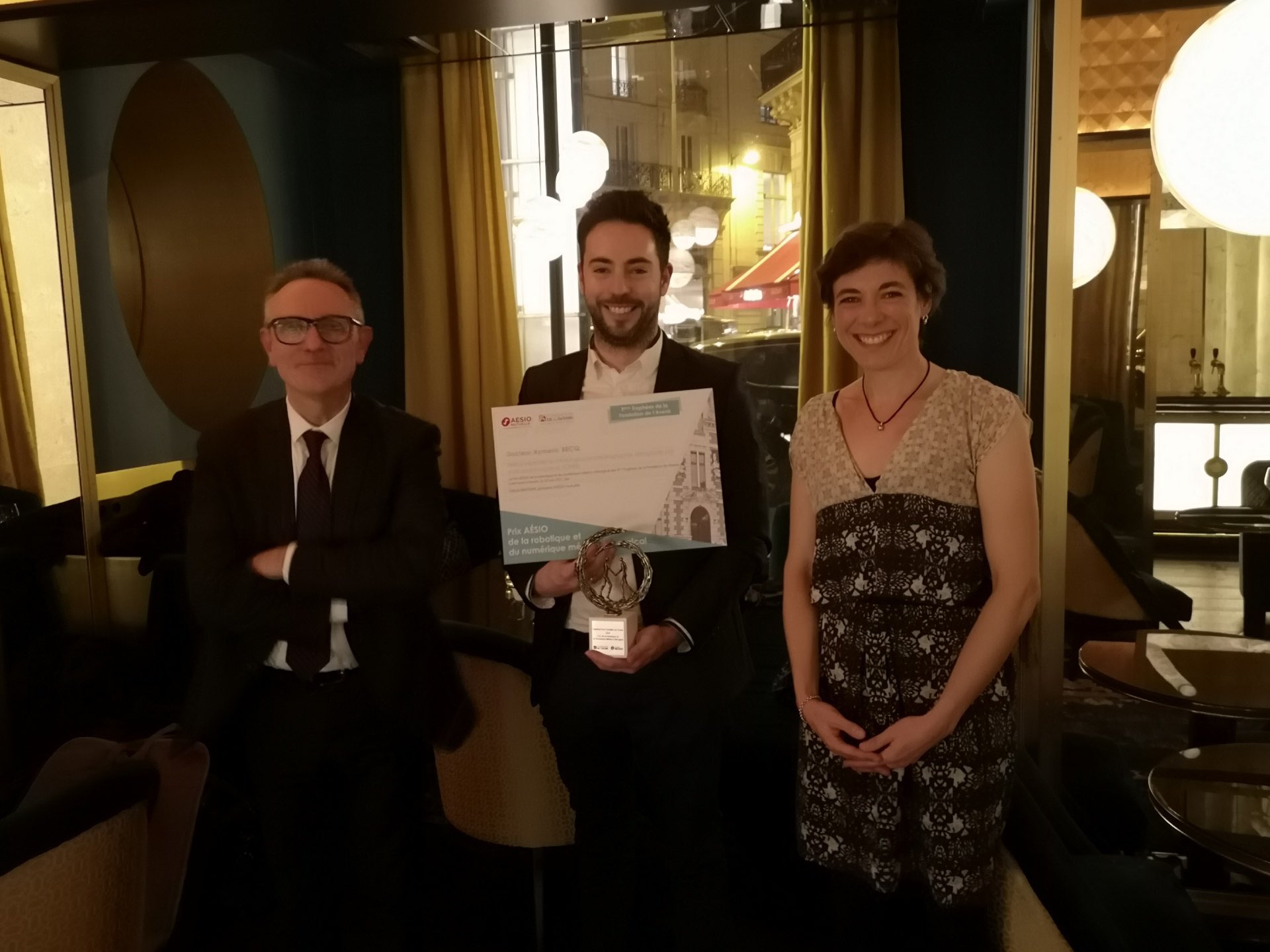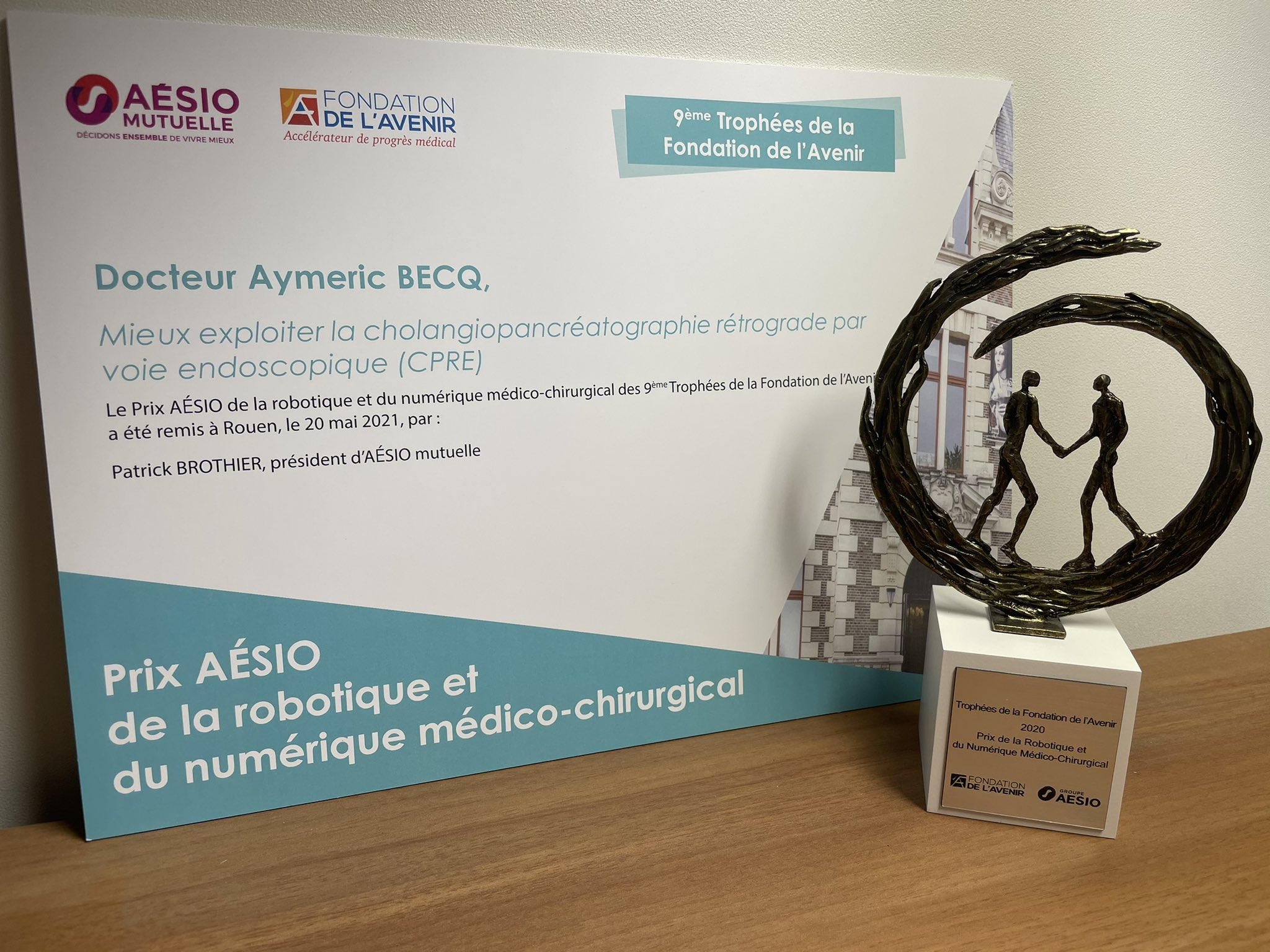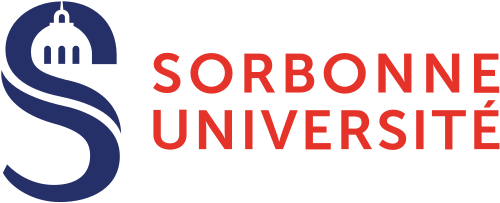Aymeric Becq is a PhD student in the AGATHE team of ISIR and a University Hospital Practitioner in the gastroenterology department (Pr. Sobhani) of the Henri Mondor Hospital (APHP). His research is currently focused on the therapeutic gesture carried out at the level of the bile ducts, work adapted to the field of endoscopy.
What are your research activities?
My research activity is on the one hand clinical. Multicentre projects, in collaboration with other teams, are currently underway under my responsibility. For example, a national prospective study on the management of early post-operative fistulas after carcinological surgery of the upper digestive tract.
There is also a retrospective study on the use of a haemostatic powder, which is capable of stopping bleeding, is underway in the framework of the major digestive endoscopy ward in Paris. This research activity is, on the other hand, focused on my thesis project. This project was conceived with Doctor Camus, as well as Professor Szewczyk of the ISIR, who is my thesis director. This work is adapted to the field of endoscopy. It concerns endoscopic retrograde cholangiopancreatography (ERCP), a therapeutic procedure carried out at the level of the bile ducts, i.e. the channels that drain the liver. The aim here is to improve the procedure via various research areas, in particular via the development of “intelligent” guide wires and by monitoring the bile ducts and tracking the endoscopic instruments within these bile ducts. This exciting project is being carried out in collaboration with robotics engineers. This collaboration will continue in the long term, with the ambition of implementation in the clinic.
You have just been awarded the AESIO prize, in 2021, for your work on How to better exploit endoscopic retrograde cholangiopancreatography (ERCP). Can you explain what this is all about?
Endoscopic retrograde cholangiopancreatography (ERCP) is a digestive endoscopy procedure that allows treatment within the bile and pancreatic ducts (stones, cancers). Several challenges can have a significant impact on the progress and success of ERCP, namely biliary cannulation, i.e. obtaining access to the biliary or pancreatic duct, interpretation of the anatomy of the biliary-pancreatic duct, and handling of the tools within the latter. The aim of this research is to refine the technique to improve the effectiveness of ERCP.


Explain how a doctor can do robotics?
Robotics applied to medicine requires a meeting between two worlds. In a way, this is the beauty of a cross-disciplinary and multidisciplinary research project. A doctor and a robotics engineer/researcher can communicate to understand each other and try to solve a research problem. This allows a researcher in robotics to touch medicine and conversely, for a doctor to touch robotics. For the project we are carrying out, doctors need to understand robotics and researchers need to understand the endoscopic procedures performed on patients. One cannot move forward without the other.
Why did you want to combine research and medicine?
Research and medicine are inseparable. The idea of a university career combining clinical and research interests me very quickly. During my Master 2 in Science, I was able to confirm my interest in research. This part of my activity is complementary to the clinical care of patients. Being with patients on a daily basis allows me to develop ideas and hypotheses with the aim of treating these patients better: safety of the procedure, success of the procedure, prognosis, etc. I therefore chose this course of study, which allows me to try to advance my field of medical expertise through this exciting research activity.
Endoscopic retrograde cholangiopancreatography (ERCP) is a minimally invasive interventional endoscopic procedure that is increasingly being performed at the expense of surgery. It is performed using a side-viewing endoscope called a duodenoscope. It has a therapeutic role, with the aim of carrying out a treatment within the bile ducts, or pancreas. Within the bile ducts, the two main types of pathology are lithiasis (stones embedded in the bile ducts) and bilio-pancreatic tumours (cholangiocarcinoma, adenocarcinoma of the head of the pancreas).
The aim of the research work is to provide the endoscopist with more efficient tools to improve the management of an increasing number of patients with severe benign and malignant pathologies.
Today, accurate mapping of the biliary tree is technically feasible. The approach of using cross-sectional images made beforehand (CT, MRI) seems the most logical. The difficulty lies rather in the practical use of this mapping, which can be used in real time and superimposed on or replaced by the 2D radiography currently used. Moreover, if there are now instruments that can be directed, and which can be traced, there are therefore several areas for improvement, which will also constitute objectives in this cross-disciplinary scientific work. To our knowledge, no work has yet been done on this issue. The issue of exposure to ionising radiation should also be taken into account in this context. The first objective of this work will be the tracking and monitoring of ERCP instruments, with precision, within biliary tree models, obtained thanks to the development of an artificial intelligence tool. The second objective will be to create a precisely manageable guidewire using advances in modern robotics applied to medicine.
Silicone overmoulding of the normal biliary tree after 3D printing
Contact: Aymeric Becq, PhD student at ISIR



